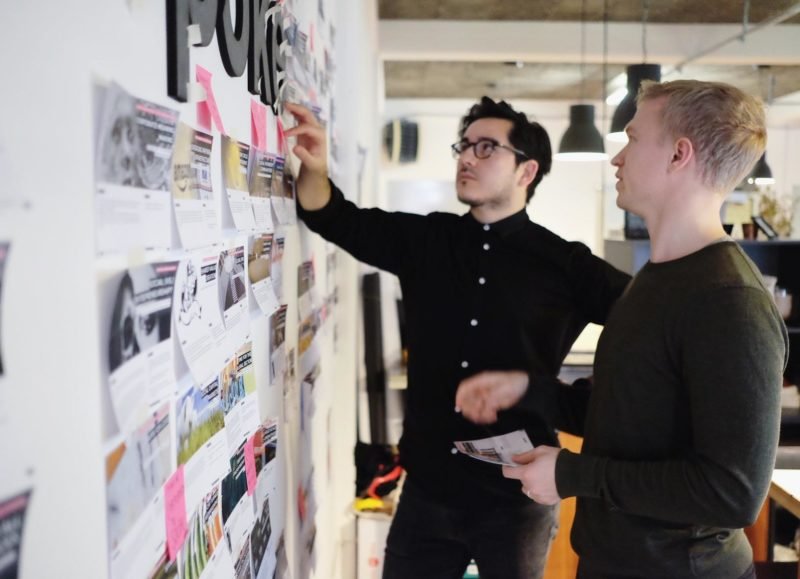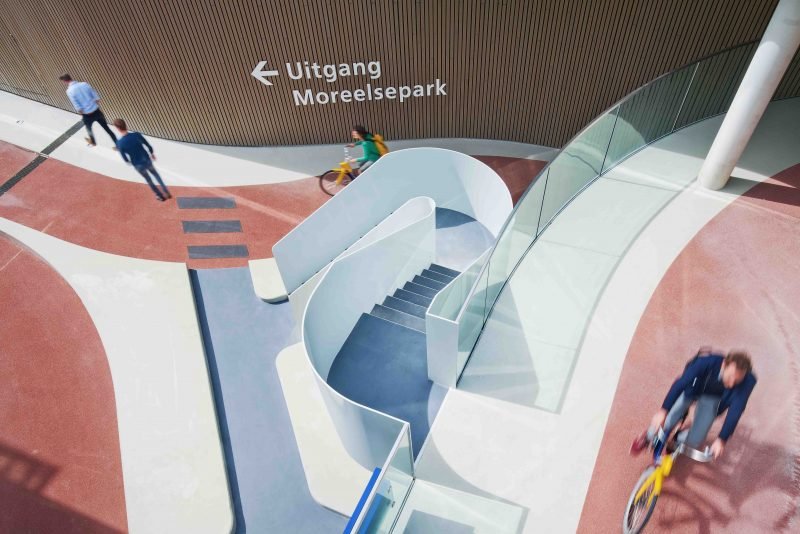The Future Of 3D Printing: An Interview With Joris Van Tubergen (ProtoSpace)
 We’re very interested in the developments of 3D printing and the possible impact of this revolution on the city, urbanism and architecture. Joris van Tubergen is lab manager at ProtoSpace FabLab in Utrecht and founder of Euro Per Minute Design. We dropped him some questions about the future of 3D printing and architecture.
We’re very interested in the developments of 3D printing and the possible impact of this revolution on the city, urbanism and architecture. Joris van Tubergen is lab manager at ProtoSpace FabLab in Utrecht and founder of Euro Per Minute Design. We dropped him some questions about the future of 3D printing and architecture.
What is ProtoSpace FabLab Utrecht?
“ProtoSpace is an open laboratory where designers, artists, inventors, entrepreneurs and students develop their own ideas or concepts. The goal of the foundation is to promote innovation. With our modern digitally controlled equipment you can transform any design from a computer file into a 2D or 3D model. ProtoSpace has a fixed schedule. Every week on Tuesday afternoon an the whole Thursday we have open days. Everybody can use the lab and the machine for free. But… you have to document and share what you you do. This way we promote open innovation. The other days are reserved for meetings, education or business events.”
What should people know about 3D printing?
“3D printing is a technique to make products, parts, things, whatever. 3D printing is not a goal, there are more techniques to make things. What is important that the technique should be digital. By using digital fabrication techniques it is easy to reproduce things over and over again and also make every product exact slightly different. By using digital techniques it is also possible to send products over the world by email instead of sending the products in a container.
3D printing is different from most other make techniques because it really builds something instead of taking material away. The object is drawn 3D in a computer, the computer slices the product in very thin horizontal sections, the printer prints the sections very precisely on top of each other. That can be done in different materials, varying from plastics to ceramics, glass, metal, et cetera. 3D printers get more and more advanced, detailed and affordable. You can make your own 3D printer in a workshop for € 1,400 in four days at ProtoSpace.”
What are your plans for the near future concerning 3D printing?
“3D printers will rise everywhere. Compare it to the rise of 2D printers. First there where used to proof read a text, later to proof print a graphic design, now the are used to produce the designs. Only if you really need an enormous amount, then you will probably need a ‘real’ press. For 3D printing it is the same. Now they are used for prototyping, but there are already examples for production. In the future more and more products will be (digitally) made when the consumer need the product. Instant production, no stock, no logistics.”

3D-printed shoe by Z Corporation
Do you expect 3D printers to become consumer products? And why?
“3D printers will become consumer products, but not more than 2D printers. Shops will have better quality 3D printers, like the professional photo lab can print better quality as well. On the other hand the first 3D printer is now already for sale for consumers at the Dutch department store Bijenkorf and we do not really have any 3D printer shop on the streetcorner yet, which surprises me a little. With my personal project Euro Per Minute Design I print products on demand while the customer is waiting. If I can do that, why isn’t there a shop doing the same? Online there are many 3D print opportunities, but not yet around the corner, where you can wait for your product.”
To which extent will the rise of the 3D printer affect the city?
“I think it will affect more than just the city. It will affect the whole chain. By sending product over the world you remove the whole economic chain from designer to consumer. That is pretty radical, but very well possible for a lot of products. Now the oil is pumped up in the Middle East, transferred to Asia, then the products are shipped to Europe and many times even sold back in Asia again. A lot of logistics. Now the product is transferred digitally. So perhaps we don’t even need to extend our harbors and airports.”

Radiolara Pavilion by Enrico Dini
What societal problem could 3D printing possibly solve or cause?
“3D printing can make more and more products personal. The role of the designer will change. He will more and more design product templates and not the product itself. The end user can — if he wants — make small adjustments and then make the product. Personal fabrication. Now you can buy maybe 7 different ‘coat hooks’ in a store. When there is a 3D printer, you can choose maybe 7,000 different coat hooks on a computer. If you choose one, then you still have the possibility to change the shape (make it longer for the big coats you have) and then print it. This product will perfectly suit my needs, and probably not yours, if you have small coats. Another comparison: graphic designers used to design a website, from top to bottom, right now they design templates for a website. The user can change everything. A good template always delivers a good website, a bad template can be ‘destroyed’ by the user. So there is also the challenge for the designer. Another example: if a part of your vacuum cleaner breaks, you go the part shop (like nowadays). Instead of shelves full of spare parts, there are several 3D printers and some computers. You give the brand name and part number and within an hour you will have your spare part. Big companies like Philips and Siemens can even provide support for their products without having the parts on stock.”
Do you believe in printing architecture?
“YES! 3D printing gets more and more common, and also bigger and bigger. Maybe 3D printing is not the technique to make houses, but digital production at the building location will be very realistic in a couple of years. Computer-controlled building with bricks is already done, computer-controlled cutting of foam is very realistic on site. But there are also examples on printing concrete walls and embed the space for the installations inside the design. And 3D printing is not rocket science, if you can make your own small 3D printer as a ordinary consumer, why wouldn’t it be possible to make the crane on the building site computer controlled? Don’t mind the resolution in the first place, if there is a proof of concept, the resolution will be better and better very very soon. We were very happy with the first digital photographs in the early nineties, but in fact we were looking at 9 pixel which represented something that possible looked like a person.”



